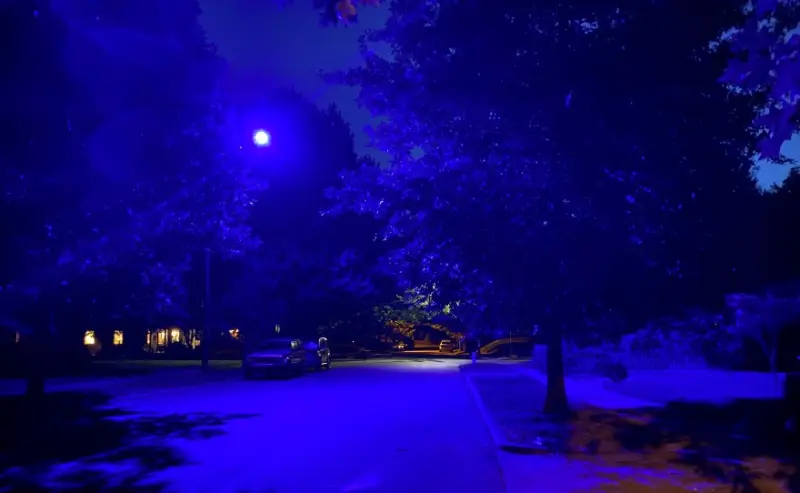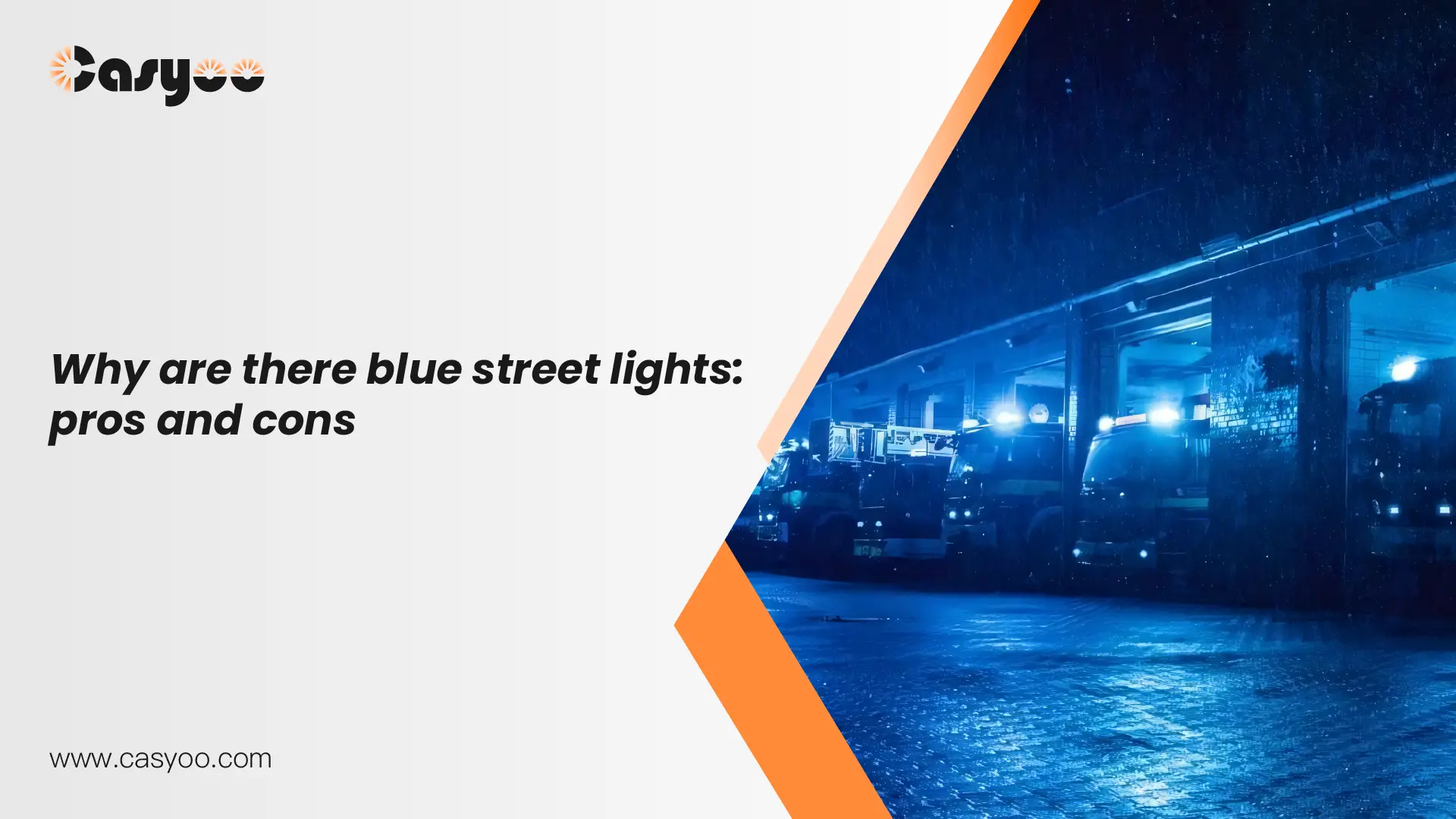Cities around the world are using LED street lights to replace the original high-pressure sodium lamps, and there are more choices for the color of street lights. High-pressure sodium lamps can only emit warm yellow light, while the color of LED street lights can be customized for specific needs. Most LED street lights emit white light, and only a few turn into blue. Let’s dive into the pros and cons of blue street lighting and how it affects our communities.
What do blue street lights mean?
If a street lamp emits blue light, we can call it a blue-light street lamp. Street lights come in a variety of forms, and we may group them by their colors. For instance, because they emit yellow light, HPS lamps are considered yellow street lights. Most LED street lamps are white light street lamps.
Why are some street lights blue?

Although there are blue street lights in some cities, they are not very common. Some cities install blue street lights to reduce crime or improve the city’s view, while more cities install them because they bought low-quality LED street lights. After using these street lights for a period of time, the light of the street lights turns blue or purple. We will analyze the reasons for installing blue street lights in the following paragraphs:
1. The street lights are of poor quality
There are two ways for LED street lights to emit white or yellow light. One is to use multiple lamp beads in the light source, which can emit red, green, and blue light, and achieve white light by adjusting the proportion of these three types of light. The other is using blue light as the light source and then applying phosphor to the lamp. When blue light from the LED light passes through the phosphor coating, some of the blue light is absorbed by the phosphor. Then, the blue light combines with the red and yellow light emitted by the phosphor to create white light.
The cost of using phosphors is lower than that of using three colors of light. If the purchasing department does not distinguish carefully, they may buy low-cost street lights using phosphors. The vibration from the road will cause the phosphor to slowly fall off, and the color of the street lamp will gradually turn purple or blue. When purchasing street lights, it is necessary to know more about the relevant parameters of the street lights and the reputation of the manufacturer. Finding relevant institutions to verify the products is also helpful to find high-quality street lights.
2. Reducing crime rates
Blue street lights can divert the attention of criminals or those who intend to commit suicide, calm them down, and reduce this kind of behavior.
Under the blue light, it will be more difficult for people to see their veins, which makes it more difficult for them to inject drugs, thus reducing the abuse of drugs.
According to news reports, after using blue light street lights in Nara, Japan, the crime rate decreased by 9%, and after the Osaka Metro Company used blue street lighting, the number of suicides decreased by 84%. Now many Japanese train stations and bridges are using blue street lighting.
3. Promote the activity of specific species of animals
According to Retrofitting streetlights with LEDs has limited impacts on urban wildlife, the study published on Biological Conservation, LED street lights increased the richness of bird species, the relative abundance of three bird species, and the activity of ground insects. And the blue light in them is one of the biggest reasons for this influence.
Negative effects of blue street lights on the human body
Science shows that blue light may be harmful to the human body, and many cities have thus banned these lights. There are very few cities that install blue street lights because of the following influence:
1. Harmful to our eyes
Blue light effectively increases alertness. Strategic placement of blue street lights in specific highway sections can successfully catch drivers’ attention. However, prolonged exposure to this type of lighting causes visual discomfort. This happens because blue light focuses in front of the retina, keeping the eyes in a constant state of tension.
The short wavelengths and high frequencies of blue light can accelerate oxidation in the eye’s macular area, potentially leading to conditions like maculopathy and cataracts. Fortunately, pedestrians and drivers typically encounter only reflected blue light. Since reflection significantly reduces light energy, the actual risk of eye damage from blue street lights remains relatively limited.
2. Affecting sleep
Blue light will inhibit the secretion of melatonin in the human body, which will make people have poor sleep quality or even be unable to sleep. Therefore, the light distribution of blue street lamps must be scientific. The light should emit on the ground instead of spreading around, and such street lamps should not be installed in residential areas in case they disturb the lives of the nearby residents.
3. Leading to accidents
- Blue LED street lights create significant safety concerns for both drivers and pedestrians. These lights produce less illumination than traditional street lamps, resulting in problematic shadows and dark spots on roads.
- Under blue light, it is hard for drivers to identify traffic signals and brake lights. Pedestrians face additional risks as the blue lighting creates strong contrast shadows that can hide obstacles, making them less visible to drivers, especially in dark clothing.
- The elderly are particularly vulnerable due to their increased sensitivity to blue light glare.
How to deal with these blue street lights?
As you may find, the cons of the lights are more than their pros. Therefore, governments are taking actions to replace these defective street lights. For most of these lights, the replacement is covered by the manufacturer’s warranty because their lights are not qualified enough.
Summary
In general, there are very few areas that use blue street lamps for night lighting. Although blue street lights have some special functions, they won’t be used as street lights on a large scale. The LED street lights our cities need should be white or soft white (with a color temperature of 3000-5000K). To avoid these problems that may happen after years of use, the related departments should buy street lights from reliable manufacturers like Casyoo. Our LED street lights feature an advanced phosphor coating technology that has passed rigorous quality testing. Ready to upgrade to reliable, long-lasting LED street lighting? Contact Casyoo today for a free consultation!




